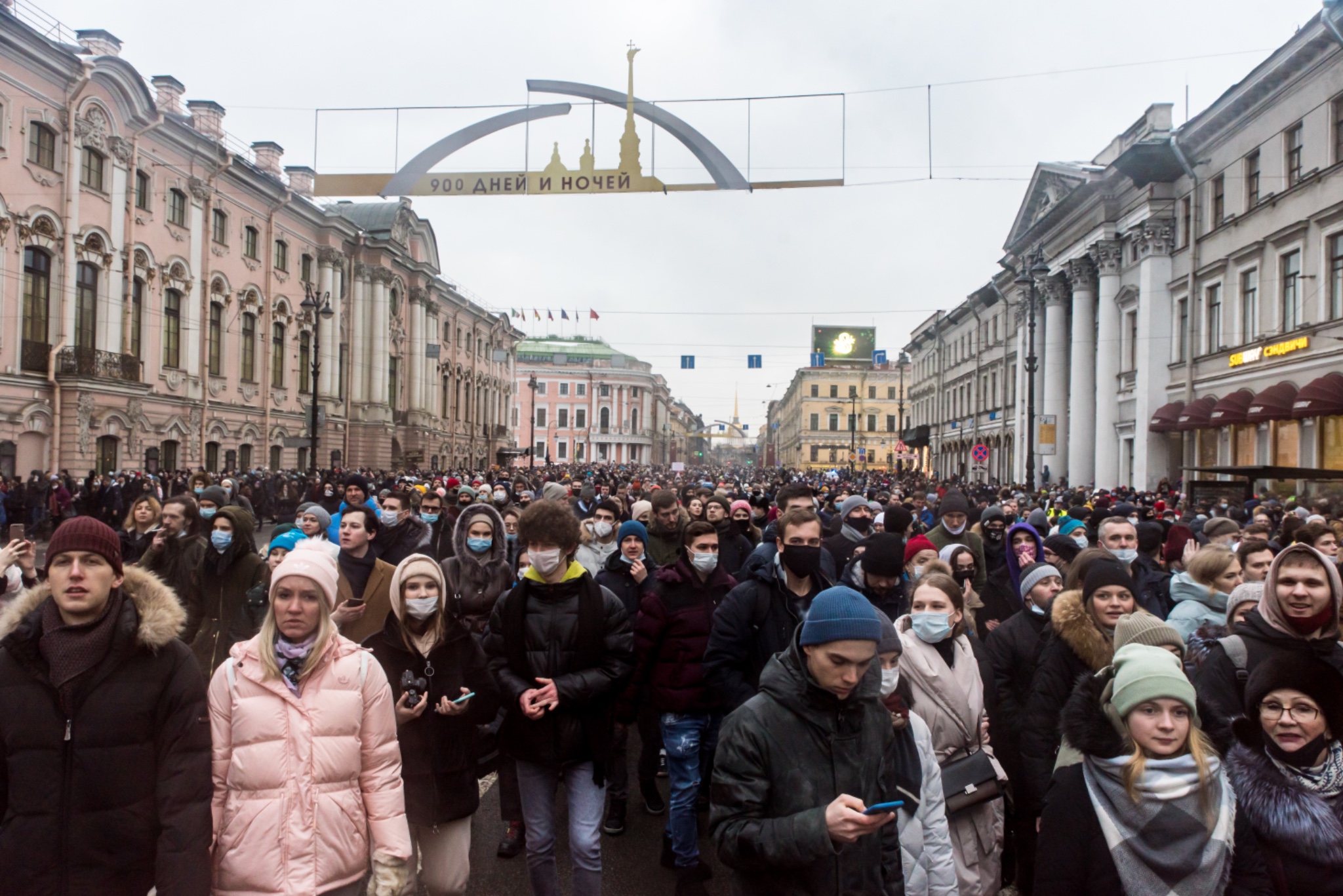 Photo Courtesy of Okras on Wikimedia Commons
Photo Courtesy of Okras on Wikimedia Commons
Russian Protests and the Kremlin’s Response: Nothing New
The Protests
This past weekend has seen an estimated over 100,000 Russians gather in over 100 cities to protest both the politically motivated arrest of opposition leader Alexei Navalny, and their own grievances and frustration with the Kremlin. Putin has so far responded with mass detainments and arrests, along with the use of force by the security services.
Russian protests erupted on Friday, January 22nd less than a week after Alexei Navalny was arrested in Moscow after returning on a flight from Berlin. Navalny has spent the past few months recuperating in Germany after surviving a poisoning carried out by Russia’s FSB domestic security agency in August. He anticipated being arrested upon his arrival, and called on his supporters to protest over the weekend. Navalny also heads an Anti-Corruption Foundation, which on Friday released an almost 2-hour long video investigation into a Black Sea palace that it alleges belongs to Putin and was paid for with a large bribe.
Protestors braved freezing temperatures and the risk of being beaten and arrested in order to make their voices heard in one of the only ways they know how. Yet it is likely that these protests will eventually fade away as most protests in Russia do. In order for these protest movements to actually take hold in the country large numbers of people will need to show up for weeks on end, and even that won’t guarantee any actual government change.
The Kremlin’s Response
The current strategy of the Kremlin is mass detainment and arrests of protestors. Over 3,500 have been arrested, and a number of protestors were injured. The Kremlin is probably confident that as time goes on and detainments continue, Navalny’s arrest will lose international attention and the protests will decrease in size and frequency. Putin certainly has reason to believe this, as protests in Russia have a history of losing steam and fizzling out eventually due to the harsh crackdowns they encounter from the security services.
The usual violence by the security forces will continue as long as the protests endure, but they will not get extremely egregious if they can help it. The Kremlin is relatively adverse to risk, and as such may not want to risk a huge show of force. Such extreme violence could lead to an even greater pushback by the people and increase attention from outside countries. The Russian protests are not a strong threat at the moment, so for now the Kremlin will simply sustain its current strategy and wait for them to peter out.
Alexei Navalny is unlikely to be released from jail anytime soon. The Kremlin has already issued statements demonizing Navalny and accusing the protests of being orchestrated by outside governments including the U.S. It will continue to do this in order to try and turn the Russian people away from Navalny, discredit his legitimacy, and accuse other states of fomenting these protests.
The so-called ‘Putin’s palace’ scandal that helped motivate the Russian protests has unsurprisingly already seen denials from Putin’s government. There will be no concrete moves against corruption as long as Putin and other members of the Kremlin deny it and benefit from it so much. The level of protest simply isn’t great enough to effect change.
Conclusion
It is unlikely that these current protests will lead to any type of lasting change in Russia, at least at their current level of turnout and frequency. However, there is an opportunity to maintain the momentum of this past weekend, with a second round of protests being announced to continue on this coming Sunday. If the Russian people are able to continue to protest in large numbers the Kremlin may reconsider its current response strategy, though this is doubtful.





